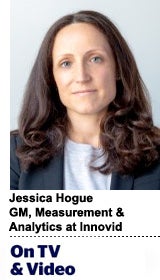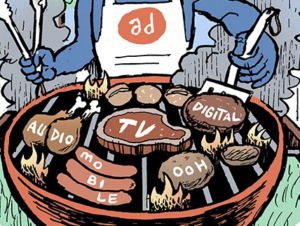“On TV And Video” is a column exploring opportunities and challenges in advanced TV and video.
Today’s column is written by Jessica Hogue, general manager of measurement and analytics at Innovid.
Even though connected TV (CTV) is growing rapidly, one challenge holding advertisers back from shifting even more dollars to the channel is the ability to manage frequency across inventory sources and ensure that those impressions are fully accounted for. This is particularly compounded by the different ways CTV inventory is bought, which is iterating in real time as buyers grapple with demands for flexibility during the pandemic.
There are a range of strategies for how apps on CTV devices package their inventory and how it can be bought: directly, either through the network full episode player or digital publisher, or programmatically via programmatic guaranteed, private marketplaces or the open exchange.
Maybe that doesn’t sound all that complicated, but the process operates a little like a freeway with lots of lanes, on-ramps and a media buyer behind the wheel. Imagine that each lane represents a unique publisher or inventory source, running in parallel, together creating a conduit for buyers to reach their ultimate destination: the consumer.
The buying process is akin to deciding which on-ramp to take (direct, open exchange or programmatic guaranteed) and – critically – when or how to merge lanes. Since the same inventory can be accessed from different on-ramps, it becomes hard to decipher how the lanes merge and channels overlap, producing the likelihood of reaching the same consumer too many times. All of this congestion creates genuine concern about the risk of ad collision, defined as seeing multiple ads from the same campaign – often the same creative – multiple times.
For optimal frequency management, there are really two challenges at hand. The first is much more of an academic problem. We simply don’t have a wealth of historical norms to know which optimal frequencies on CTV achieve a desired outcome, whether it is awareness, conversion or something else.
This owes to CTV’s relative immaturity as part of the media mix. It is not uncommon for agencies and brands to question what role CTV plays in the overall mix. Does an impression on CTV have the same impact as a GRP on linear? Should it be deployed to extend reach and deliver more GRPs, or to bring a consumer further down the purchase funnel by engaging them with shoppable content to drive a conversion?
More experiments and innovative measurement over time will reveal how many exposures are too many for a CTV ad and when reach hits diminishing returns. Until then, we’re often relying on gut and guesswork.
Establishing frequency targets at the campaign level, by month, week and inventory source can be done today. The technology exists to deliver on these goals, but data needs to flow through a lot of systems to make those targets and caps operational across buying approaches.
Brands and their partners must demand that inventory sources and buying platforms share the granular data at the app or deal level to calculate frequency across publishers and channels. The technology exists to do so in a privacy-compliant way, but the willingness and incentives are not.
For publishers, data sharing and collaboration ensures they can demonstrate the unique reach of their inventory and efficiently do their part to manage frequency across converged campaigns. For media buyers and planners, transparency into how ads alongside the same content accumulate across different screens, regardless of how the inventory was sold, is critical for planning and campaign management.
In today’s market, where buyers are looking to plan and transact fluidly between traditional upfront spend and programmatic buys, the need has moved beyond basic visibility to requiring x-ray vision to break down impressions and track frequency by inventory source. Naturally, data sharing and interoperability have to work in such a way to be timely so indicators can be refreshed frequently. Frequency management is only useful if it’s deployed in a way that aids course correction in flight.
Most importantly, this insight will inform marketers about where CTV adds incrementality and efficiency, which will go a long way to building not only confidence in a growing medium but the sophistication to unleash it for full effect. Without this level of partner collaboration, CTV is just another black box.
It is critical for everyone to do their part to create a well-lit ecosystem enabled with consistent metrics to aid the media planning and buying process within CTV. With an ever-growing landscape of premium AVOD platforms and an engaged viewing population, there is plenty of incentive for everyone to give to get.
Follow Innovid (@innovid) and AdExchanger (@adexchanger) on Twitter.













